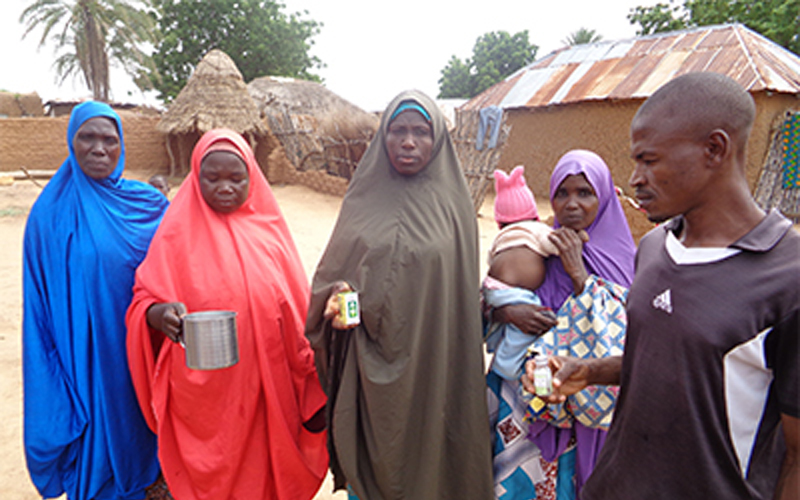+234 912 443 7374

Access to clean and safe water is vital for the health and well-being of communities worldwide. However, ensuring the provision of uncontaminated water requires comprehensive planning and implementation. RUWAF’s Water Safety Plan (WSPs) has emerged as a critical tool in safeguarding communities, preventing waterborne diseases, and promoting public health. RUWAF’s WSP play a pivotal role in guaranteeing clean and safe water, protecting communities from the dangers of waterborne illnesses.
Waterborne diseases, caused by pathogenic microorganisms present in contaminated water sources, pose a significant threat to human health. These diseases, including cholera, typhoid, hepatitis, and dysentery, can lead to severe illness, long-term health complications, and even death. Preventing the transmission of waterborne diseases is of paramount importance, requiring proactive measures to ensure the safety of drinking water.
RUWAF’s Water Safety Plan provides a systematic and preventive approach to managing and ensuring the safety of drinking water. RUWAF’s WSP is a comprehensive risk management framework that encompasses all aspects of water supply systems, from catchment to consumer. By identifying potential hazards, assessing risks, and implementing control measures, RUWAF’s WSP program aim to deliver clean and safe water to communities.
At the core of RUWAF’s Water Safety Plan lies a thorough risk assessment. This process involves identifying potential hazards, such as contamination sources, inadequate treatment practices, or distribution system vulnerabilities. By evaluating the likelihood and severity of these hazards, RUWAF can prioritize risks and develop appropriate mitigation strategies. Effective risk management practices which include regular monitoring, testing, and maintenance, ensures sustenance of safe drinking water in rural areas.
Protecting the source water is fundamental to preventing waterborne diseases. RUWAF’s Water Safety Plans focus on preserving the integrity of water sources, including rivers, lakes, and groundwater reservoirs. This involves implementing measures to prevent contamination, such as restricting access to vulnerable areas, monitoring land use practices, and implementing appropriate wastewater treatment processes. By safeguarding the source water, communities can rely on a clean and uncontaminated supply.
Water treatment plays a vital role in removing or inactivating pathogens and impurities from raw water. RUWAF’s Water Safety Plan emphasize the use of effective treatment processes, such as filtration, disinfection, and advanced technologies, tailored to the specific needs and characteristics of the water source. Regular monitoring and testing of treated water quality ensure the efficiency of these processes, minimizing the risk of waterborne diseases.
Even with a clean and treated water supply, risks can emerge during distribution. Aging infrastructure, cross-connections, and pipe breaks can compromise water quality. RUWAF’s Water Safety Plan address these challenges by implementing maintenance protocols, conducting routine inspections, and promptly repairing or replacing damaged infrastructure. By ensuring the integrity of the distribution system, RUWAF’s WSP can maintain the safety of drinking water until it reaches consumers' taps.
RUWAF’s Water Safety Plans recognize the importance of community engagement and education in promoting safe water practices. Effective communication strategies, public awareness campaigns, and education programs empower individuals to take an active role in safeguarding their water supply. By encouraging hygiene practices, promoting proper water storage, and raising awareness about the risks of waterborne diseases, communities become proactive participants in ensuring their own health and well-being.
Continuous monitoring and evaluation are essential components of RUWAF’s Water Safety Plan. Regular testing of water quality at different stages of the supply chain, as well as compliance monitoring with established standards and guidelines, allows for early detection of potential issues. By promptly addressing any deviations, communities can maintain the integrity of the water supply and protect themselves from waterborne diseases.
Waterborne diseases pose a significant threat to public health, emphasizing the importance of ensuring clean and safe water supplies. RUWAF’s Water Safety Plan provide a holistic and proactive approach to prevent waterborne illnesses by addressing potential hazards, implementing robust treatment processes, maintaining distribution system integrity, and engaging communities. By prioritizing the protection of water sources and promoting best practices, RUWAF’s WSP program plays a pivotal role in safeguarding communities and fostering public health.